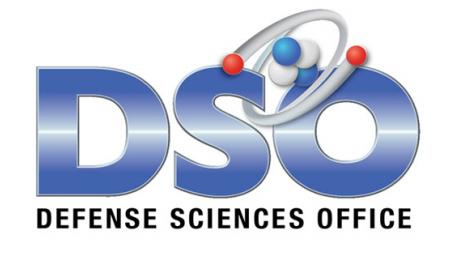
DARPA’s Defense Sciences Office adds complex systems to a blend of fundamental and applied research to push the limits of scientific knowledge and enable transformative technologies for the U.S. military
Jun 16, 2014
Scientists and engineers in DARPA’s Defense Sciences Office (DSO) promote and exploit new discoveries across the frontiers of physics, chemistry, and mathematics to identify and accelerate potentially game-changing technologies for U.S. national security. After recently spinning off biological technologies into a new office, DSO’s investment portfolio, which continues to create new materials and explore the boundaries of physical phenomena, is expanding to include novel approaches to understanding, predicting, designing, and developing engineered complex systems.
As DARPA Director Dr. Arati Prabhakar explained in recent testimony to Congress, “Today’s diverse threats can either be viewed as imposing a barrier or as an opportunity to overcome a difficult challenge. Either way, I believe our national security will depend upon how we deal with complexity.”
Often referred to as “DARPA’s DARPA,” DSO relies on outstanding program managers drawn from universities, government, corporate laboratories, and research communities. This diversity forges the interdisciplinary connections that characterize DSO efforts—and which, in some cases, have grown into completely new fields, from materials science to microelectronics and biological technologies. Program managers are impassioned and empowered to make critical investments in an ever-changing scientific and strategic landscape.
“The Defense Sciences Office is an intrinsically adaptive organization,” said Dr. Stefanie Tompkins, who became DSO’s director on April 1, 2014. “We have only a couple of certainties to guide our work: global technology capabilities will continue to grow rapidly, regardless of who drives them, and the already-complex national security environment will continue to change and diversify.”
Dr. Tompkins previously served as a program manager and deputy director in DARPA’s Strategic Technology Office, where she focused on the development of integrated systems that provided navigation, sensors, and other mission capabilities to military platforms. Prior to joining DARPA, Dr. Tompkins spent ten years in industry, with a research background in geology and spectroscopy. Her systems-development perspective and broad technical experience inform her approach to shaping DSO’s investment strategy.
Organized in 1980 as a unified office for DARPA’s basic research programs in materials science, earth sciences, and neurotechnology, DSO has continuously adapted its focus to reflect evolving national security priorities and the ever-expanding frontiers of physical science and mathematics. From seismographic arrays that formed the basis for nuclear treaty verification, to rapid vaccine production to counter biological threats, to navigation sensors based on controlling clouds of atoms, DSO has repeatedly made the pivotal early investments and produced the interdisciplinary connections needed to turn a scientific breakthrough into a defense capability. DSO’s success in creating new technologies and research communities has been particularly evident when specific DSO research areas reached tipping points that seeded entire new offices within DARPA, as happened in the 1990s with the formation of the Microsystems Technology Office and again this year with the new Biological Technologies Office.
Complexity of the sort brought about by increasing technical uncertainty, shifting and unpredictable threats, and global competition for resources has been the common thread that ties together DSO’s work to address national security and scientific research challenges. Achieving the breakthrough technical capabilities needed to address such challenges often requires weaving together core scientific disciplines, spatial scales, and analytical approaches in ways that go beyond their simple extension. DSO’s goal is to discover new and emergent properties that disrupt predictions, change system dynamics, and deliver opportunities for novel function.
For example, one major national security challenge is the sheer diversity of environments in which the military must operate, often on short notice. Such missions typically demand a level of equipment customization. The potential for dramatic and novel technologies coalescing at the intersection of mathematics, physics, materials science, and manufacturing can enable the development of tools to rapidly model, design, and build new equipment on demand. In those instances, success emerges from a deep understanding of uncertainty and error in complex engineered systems.
Although complexity underlies much of DSO’s near-term investment strategy, many of the technology spaces and program ideas for future years have not even been conceived yet. A new office-wide Broad Agency Announcement (BAA) was released today and calls for executive summaries, whitepapers, and proposals for innovative research concepts, which may have roots in mathematics and the physical sciences but that extend beyond those spaces into radically new, perhaps “unimaginable,” capabilities.. The BAA is available here: http://go.usa.gov/9cWW
An office-wide BAA Proposers’ Day is scheduled for June 19-20, 2014, at DARPA to provide an overview of the current DSO portfolio and new challenges the current program managers would like to address. The meeting will be a livecast on the Web to accommodate remote participants. Advanced registration is required for both in-person and online participation. More information is available at: http://go.usa.gov/8S74.
# # #
Multimedia posted on www.darpa.mil may be reused according to the terms of the DARPA Usage Agreement: http://www.darpa.mil/policy/usage-policy.
Tweet @darpa
